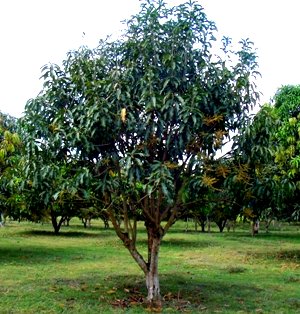A bonsai tree is an artistic replica of a natural tree in miniature form.
It exists in a pot or container which is either naturally or artificially made.
It may also be growing out of a crevice of or clasping a rock or stone, or clinging to its side.
Above all, it should portray an illusion of a natural scene or the active interplay of the elements of nature.
The actual age of the tree or trees is not so important, it is the illusion of age that matters.
There are, therefore, four essential requisites of a bonsai tree, namely:
(1) there is a dwarf tree or trees which appear to be a miniaturized reproduction of a real and old tree or trees;
(2) such tree or trees are growing in a pot or container or attached to some rock or other support;
(3) the trees are aesthetically appealing either singly or as an overall effect in grouping trees;
and (4) the ultimate effect is that the presentation reminds the viewer of natural scenery.
Yes, having a dwarf tree is not enough. Not even if it is potted in a beautiful container.
Without the other requisites, such a tree will just be a dwarf tree or miniature or a potted tree.

